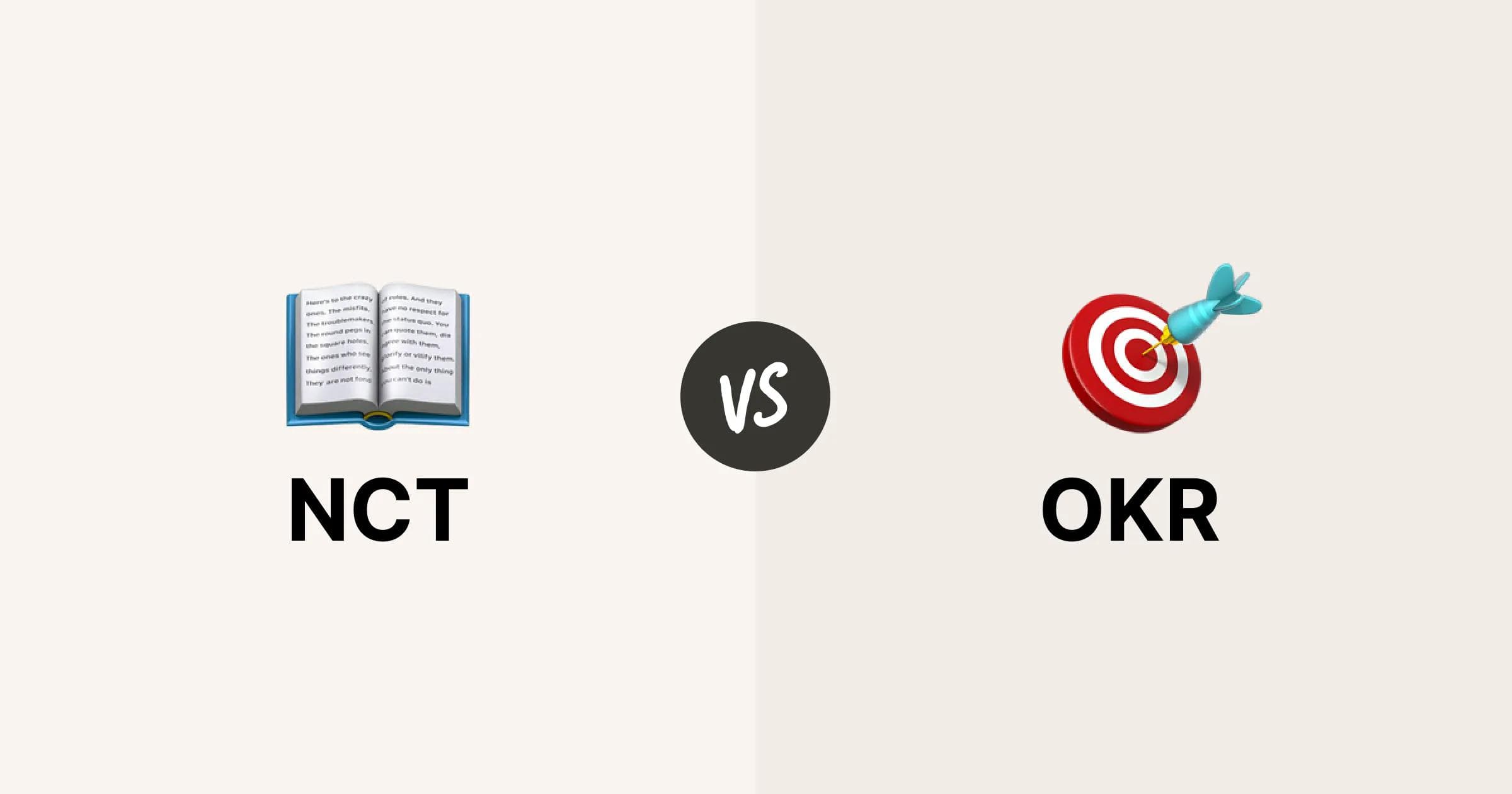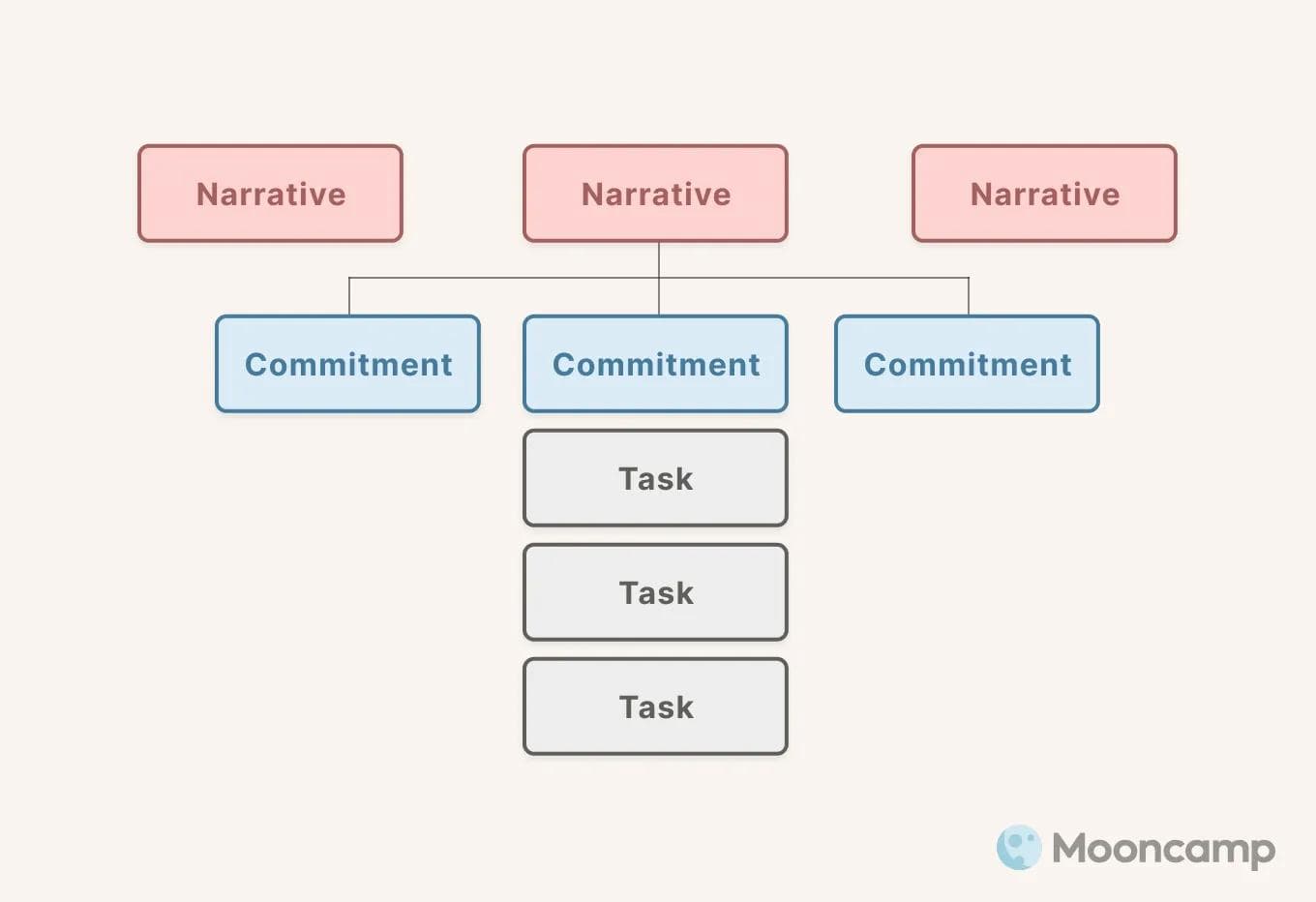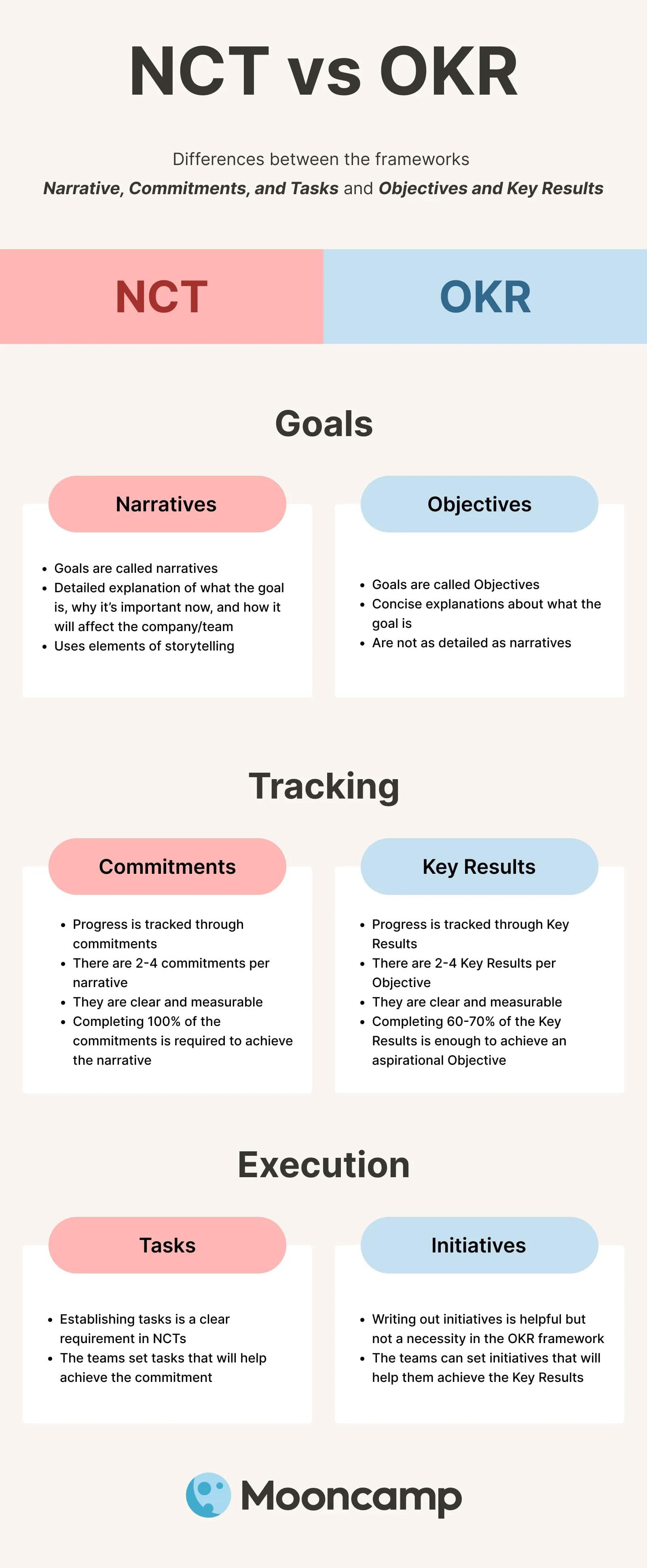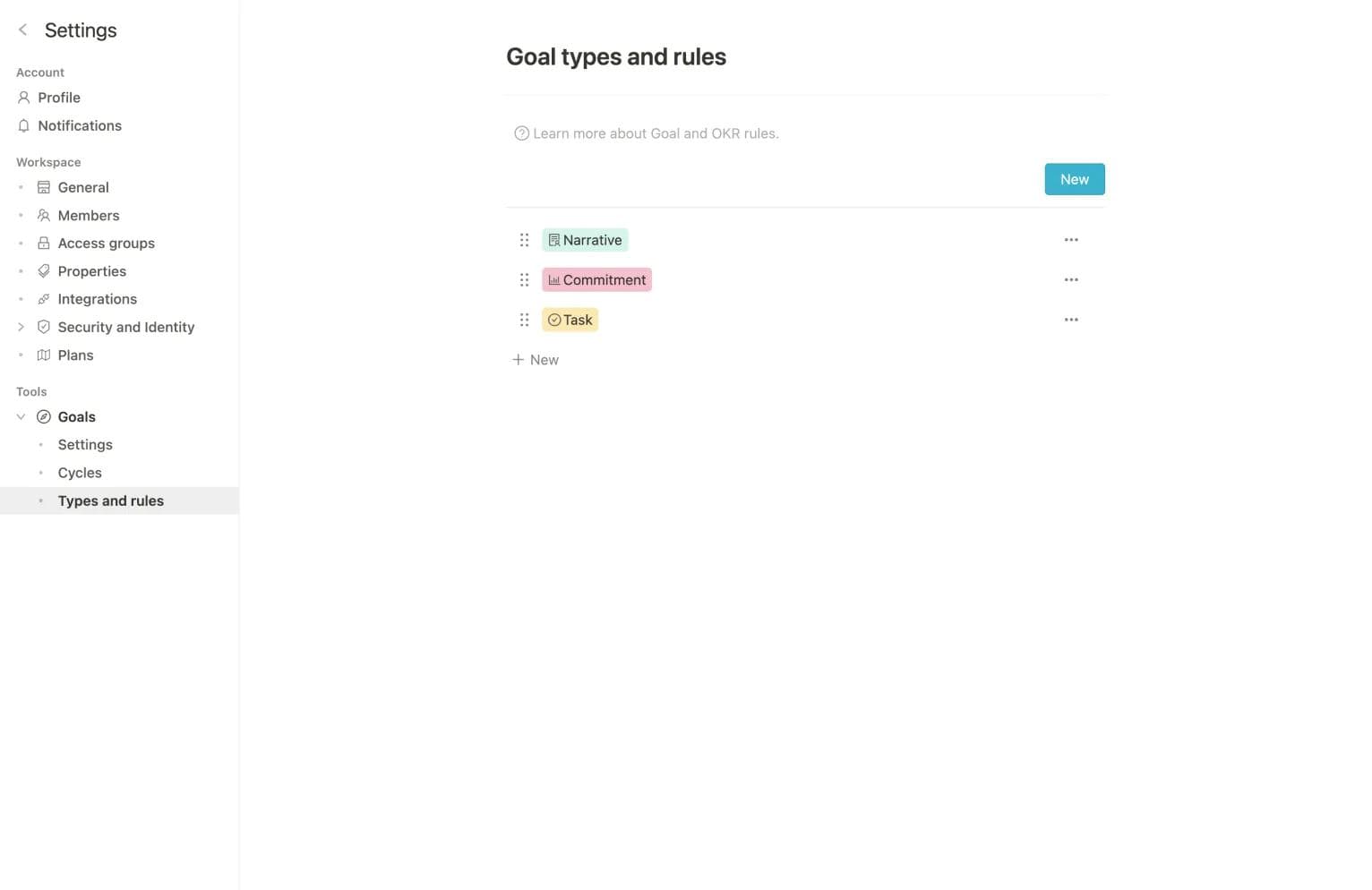NCT vs OKR: Same, same but different!

Setting and achieving goals can be a challenging task. It requires a clear understanding of the company's strategy, open communication, and alignment of all tasks. This is why many companies use the OKR (Objectives and Key Results) methodology to facilitate the goal-setting process.
However, in the past years, there has been a growing aversion toward OKRs due to misunderstandings surrounding them. Oftentimes teams get confused by vague Objectives and feel overwhelmed by the lack of guidance in OKRs. As a result, the NCTs (Narrative, Commitments, Task) framework has been gaining popularity as a possible alternative to OKRs.
But what exactly are NCTs? How do they differ from OKRs and are they really necessary? This article answers all of these questions and also shows how you can set up NCTs within Mooncamp.
💡 Reminder: OKR (short for "Objectives and Key Results") is an agile framework for formulating and implementing strategic goals in companies that consists of three core elements:
- Objectives: What do I want to achieve?
- Key Results: How do I know that the goal has been achieved?
- Initiatives: How do I achieve the objective?
As a rule, 2 to 4 Objectives are formulated per team and 2 to 4 result-oriented Key Results per Objective. The output is mapped in initiatives (= concrete activities). More basic knowledge can be found in our OKR guide.
What are NCTs (Narrative, Commitments, Tasks)?
Much like OKRs, NCTs are used to help companies set and execute goals within a certain period of time (typically, 3-4 months). It is a three-part framework that uses narratives, commitments, and tasks to bridge the gap between strategy and execution. In sum, NCTs aim to clarify the strategy, goals and required steps toward achieving the goals.

Narratives
Establishing the narrative is the first step when working with NCTs since they are used to convey the goal to the team, just like the Objectives of the OKR method.
Narratives are detailed descriptions of what a team would like to achieve within a cycle and also answer the question “Why now?”. It uses elements of storytelling to tie the goal to the company’s business strategy, thus explaining the goal’s contextual relevance. This in turn provides clarity for all involved parties.
Narrative example: Our traditional approach to marketing is outdated. If we want to stay relevant, we have to change our strategy and expand our target group. The best way to reach new target groups is through a unique cross-platform marketing campaign. Our original, expert-written content and a completely revamped website will enable users to share and speak about our product, which will in turn drive customer engagement.
Commitments
Commitments are aligned under the narrative and resemble the Key Results in OKRs. They are measurable goals that depict how much progress is being made toward the achievement of the narratives. All NCTs should have 2 to 4 commitments per quarter. These commitments must be 100% completed to achieve the narrative.
Commitment examples:
- Increase organic website traffic by 25% within four months
- Get 30 people to subscribe to our blog by the end of the quarter
- Increase the number of social media followers by 15% by the end of Q2
Tasks
Tasks are the specific actions that a team sets for itself in order to achieve the respective commitments. The task list is not set in stone and can be adjusted throughout the cycle. Tasks that are deemed irrelevant later on can also be removed.
As hinted at above, NCTs bear many resemblances to OKRs, seeing as both frameworks consist of similar elements, like Objectives and narratives, commitments and Key Results, or tasks and initiatives.
NCTs vs OKRs: What’s the difference?
The newfound hype towards NCTs raises an important question – how exactly are they different from OKRs?
In truth, NCTs are just an opinionated version of OKRs with a few key adjustments:

Difference between narratives and Objectives
Perhaps the most notable difference between the two frameworks can be found when comparing narratives and Objectives.
Although they’re both a type of goal, narratives tend to be more detailed than Objectives, as they are written in a longer format and use elements of storytelling to explain what the goal is. Unlike Objectives, narratives also explain why the goal is relevant to the overall business goal, and hint at how it should be achieved.
Objectives, on the other hand, are usually more concise and solely focus on depicting the team’s specific goal. It is then up to the leaders to explain and communicate the relevance of the Objective. However, due to the flexible nature of OKRs, Objectives can also be formulated as narratives if that is to a team's liking.
NCT example:
Narrative: To do our part in saving the planet we must become the leading provider of eco-friendly cleaning products, promote sustainable practices, reduce the environmental impact of cleaning products, and become role models in the sustainability market.
Commitment 1: Achieve a 30% increase in sales revenue from new markets within the next cycle.
Tasks:
- Conduct market research to identify potential target markets and consumer segments
- Develop marketing strategies tailored to the identified target markets
- Establish distribution partnerships in the new markets to expand product reach
Commitment 2: Enhance product sustainability and reduce carbon footprint by achieving a 20% reduction in packaging waste.
Tasks:
- Research and source eco-friendly packaging materials
- Redesign product packaging to incorporate recyclable and compostable materials
- Implement recycling programs and educate customers on proper disposal practices
Commitment 3: Increase customer satisfaction ratings by 15% based on post-purchase surveys.
Tasks:
- Train customer service representatives on product knowledge and effective communication
- Implement a customer feedback system and address customer concerns promptly
- Personalize customer interactions and offer loyalty rewards for repeat purchases
OKR example:
Objective: Increase market share in the eco-friendly cleaning product industry.
Key Results:
- Achieve a 10% increase in market share within this cycle
- Reduce packaging waste by 20%
- Increase customer satisfaction ratings by 15%
Difference between commitments and Key Results
When it comes down to commitments and Key Results, the two frameworks share more similarities than differences.
Commitments and Key Results are the same concept at their core: they measure how much progress is being made toward a goal.
The only difference is that the achievement of NCTs requires 100% completion of commitments. With OKRs it is different. If the pursued Objective is committed, then the Key Results must also be completed 100%, just like with NCTs. But if the Objective is aspirational, completing 70% of the Key Results is also considered a success.
In sum, Key Results can work just like commitments if the OKR is committed instead of aspirational.
Differences between tasks and OKR initiatives
When working with OKRs, Key Results are typically complemented by OKR initiatives. These initiatives are nothing more than tasks or projects that need to be done in order to achieve the Key Results.
So in reality, OKR initiatives are exactly the same as the NCT tasks. The only difference is that initiatives are not an explicit part of the OKR acronym.
Are NCTs better than OKRs?
Let’s wrap up what we learned:
OKRs are a flexible goal management framework. The OKR framework can be molded into the NCT framework by adjusting just a few parameters. For instance, Objectives can be written in more detail and address the “why now?” so that they resemble the narratives from NCTs. OKRs can also be committed so that the Key Results behave the same as commitments. And lastly, OKR initiatives are essentially the same as NCT tasks.
So why are NCTs gaining a reputation for being better than OKRs?
In truth, the growing preference towards NCTs is caused by misconceptions and a lack of understanding about OKRs.
For example, the statement “NCTs are better for cross-functional teams than OKRs” is becoming more common. The alleged reason is that OKRs do not provide enough context in regard to why they are important to the company and different teams. This is, however, false. If implemented and communicated correctly, OKRs can be extremely useful and help cross-functional teams thrive.
When the benefits and implementation process of OKRs are not understood, mistakes can easily be made. As a consequence, OKRs are perceived as a tedious and frustrating tool instead of a helpful management framework.
Next up, common misunderstandings about OKRs and why they fail will be resolved.
Why OKRs fail
When speaking of OKRs it is often mentioned that they increase autonomy, productivity, and motivation. But how do they achieve this?
Introducing OKRs shouldn’t be seen as a magical solution. OKR can be a powerful framework for goal-setting and management, but it entails effort. Constant communication and collaboration across teams are required. This can only be achieved if the leaders in charge of the OKRs understand the framework and can successfully explain it to the teams involved.
When leaders fail to understand OKRs, they tend to fall for the myths and misconceptions surrounding the framework. This can lead to the wrong Objectives being set or to miscommunications. As such, many of the problems revolving around OKRs are due to a lack of understanding. So what are some common myths surrounding OKRs?
OKR myths
Objectives have to be aspirational and challenging
Often OKRs are associated with challenging and unrealistic goals. Although teams can set aspirational goals, Objectives can also be tailored to a team's preference. This means that teams can also choose to set committed instead of aspirational OKRs. Furthermore, in case you set aspirational OKRs, leaders should make sure that they are not too aspirational so that they could never be achieved and teams get demotivated.
OKRs magically motivate employees
One of the benefits of OKR is the flexibility it offers since teams can choose their initiatives and help choose the Key Results. This can lead to higher levels of accountability and increase the involvement and motivation of the teams. However, teams can only be held accountable if they truly understand the Objective and OKR process.
Simply setting a goal does not instigate motivation. Team members require clarity to feel confident enough to work independently and in turn feel motivated. For this reason, executives must explain both the reason for introducing OKRs, the OKR process, and the goals themselves repeatedly to make sure that employees understand it. This is also why writing effective OKRs requires constant team communication and collaboration. In sum, OKRs do motivate employees, but only if they are explained and communicated properly.
OKRs are fixed and cannot be changed
Believing that OKRs cannot be changed or adapted is a grave misunderstanding of OKRs. In truth, setting OKRs is only a fraction of the work. Objectives and their Key Results must then be checked regularly and adjusted if necessary. Besides that, OKRs can also be changed to better fit a company’s needs. For example, Objectives can follow a different format, e.g. that of a narrative. This allows the OKR system to grow and develop alongside the team.
Tip: OKR workshops help leaders understand and set effective OKRs. By taking part in OKR workshops companies can reduce the risk of failure.
Conclusion: NCTs or OKRs?
By better communicating what the OKR framework is and what it isn’t, leaders can address the root causes of why some employees feel frustrated when working with OKRs.
Furthermore, based on a common understanding of the flexibility of the framework, OKRs can be shaped into a tool that is identical to NCTs. Ultimately, it comes down to personal preference or what works best for your organization.
As such, OKRs might be better for experienced teams that prefer complete autonomy and stretch goals. NCTs on the other hand, might be better suited for teams that require more guidance and concrete steps.
Tip: Companies struggling to organize and execute OKRs can benefit from a dedicated OKR software.
Regardless if you want to roll out OKRs or NCTs in your company, the best strategy execution tools will give you the freedom (and the structure) to make the rollout a success.
Setting up NCTs with Mooncamp
Mooncamp is the ideal strategy execution software for those interested in trying NCTs as it is completely customizable. Teams have all the freedom they need since they can easily set up custom goal types like narratives and commitments, as well as adjusting the platform to reflect custom goal framework rules.

Implementing NCTs with Mooncamp is simple and can facilitate the adjustment process that comes with working with a new framework. To integrate NCTs, one must simply go to settings and under the “Goals” section proceed to either add narratives, commitments, and tasks labels or use them to replace the preexisting Objective, Key Results, and initiative labels.


After adding the NCT labels in the “Types and rules” section one can go back to the goal overview and readjust the names of the goals as well as the types by using narratives, commitments, and tasks.

FAQ: Narrative, Commitments, Tasks
Are NCTs better than OKRs?
In short: No. NCTs are just a version of OKRs. After all, OKRs can be adjusted to reflect both the terminology as well as the NCT framework's rules.
What is the main difference between NCTs and OKRs?
The key difference is that narratives are like detailed stories that explain a goal and why the goal is important right now. They are longer and use storytelling to show why the goal is important for the business and give hints on how to achieve it. Unlike Objectives, which are shorter and to the point, narratives tell a bigger story. Lastly, commitments are like Key Results which are only considered to be achieved if they are completed 100%.

